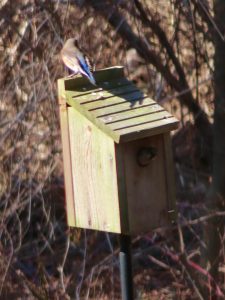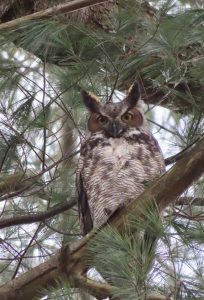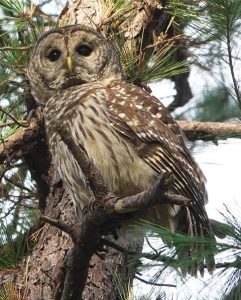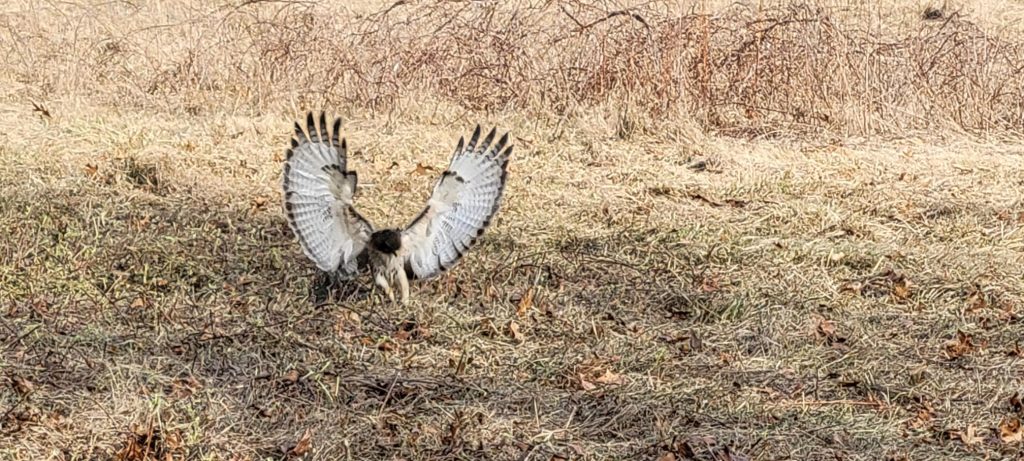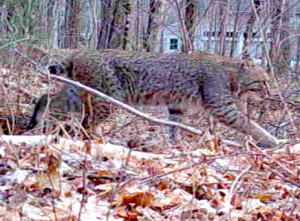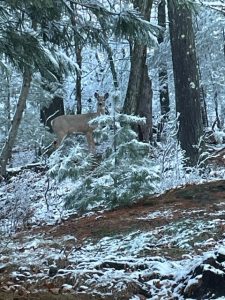Written by Gwyn Loud for the Lincoln Land Conservation Trust. She welcomes your sightings and questions at 781-259-8690 of gwynloud555@gmail.com
Once again, temperatures varied widely over the past month and we have had little snow. Feb. 3 and 4 brought record-breaking cold to New England, but the very next day we were back in the balmy high forties! According to the Boston Globe, Boston set a new record for Feb. 4 when temperatures dropped to 10 degrees below zero at Logan International Airport early Saturday morning. That smashed the previous record, set in 1886, of minus 2 degrees. As cross-country skiers and children lament the lack of snow, the landscape also suffers. Snow provides an insulating blanket for plants and small mammals such as voles which tunnel through the snow, and melting snow adds to our water table. History shows, however, that we can have major snowstorms in the second half of winter, so there is still hope! The small amounts of snow we have had so far, sometimes just a dusting, are actually ideal when it comes to reading animal tracks. Tracks tell a story of what animal was there, how long ago, where was it going and how fast, and what it was doing.
On Groundhog Day, Feb. 2, Ms. G., the Commonwealth’s official groundhog and a resident at Drumlin Farm, did not see her shadow. According to folklore, this means spring will arrive early. We’ll see. In the meantime, we can welcome the sight of sap buckets on maples for the sugaring season. The ideal temperatures in which the sap will rise are below freezing at night and up into the forties during the day. As climate change affects our weather, sugaring in New England will likely be impacted.
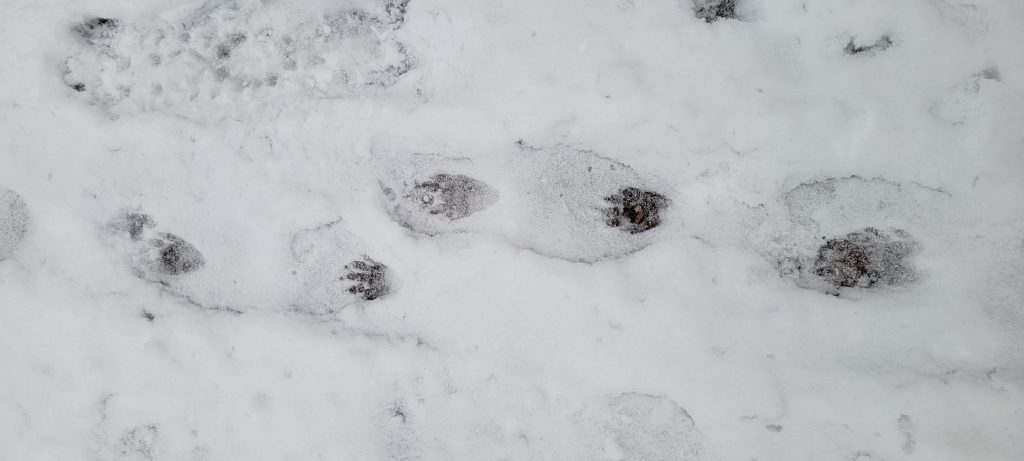
In response to increasing hours of daylight, birds are beginning to sing spring songs. I have been hearing black-capped chickadees singing their fee-bee call, house finches twittering enthusiastically, mourning doves cooing and various woodpeckers drumming. Skeins of Canada geese are honking overhead and an early killdeer was spotted at Drumlin Farm. Birds such as Eastern bluebirds and house sparrows are investigating real estate (aka bird houses), and my neighbor even photographed a box with a house sparrow inside and a bluebird on top. Looks like a bidding war to me! Red-winged blackbirds, common grackles, and a couple of turkey vultures have been spotted; they are either early spring arrivals or just never left in the fall. By the third week in February, however, we can expect to hear the familiar konk-a-ree call of red-winged blackbirds as they arrive from the south.
Great-horned owls, our earliest nesters, are already sitting on eggs. They usually choose an old nest built by previous users such as red-tailed hawks, crows, or ravens, often high in a white pine. Mary Holland writes that the owls are resilient in dealing with the weather and can incubate eggs when the temperature falls as low as -27℉. Barred owls can be heard year-round and are famous for their Who cooks for youuuuu? call but, especially at this season, they have a wide repertoire of raucous hoots, caws and gurgles as they are courting. They will nest in tree cavities in March or April, although they will use old nests of hawks or crows if they cannot find the right tree cavity.
Birds sighted from Drumlin Farm over recent weeks include an Eastern meadowlark which has been seen in Boyce Field many times. Meadowlarks are a grassland species which is in sharp decline, now rarely seen in Lincoln, making it even more unusual to find it here in the winter. Other reports from the fields and woods at Drumlin include an overwintering pine warbler, a winter wren, common ravens displaying breeding behavior, several yellow-bellied sapsuckers, purple finches, golden-crowned kinglets, and an Eastern towhee, a Northern harrier and a gray catbird. People are seeing a lot of pileated woodpeckers around town, and on Farrar Pond, due to open water, there are fifteen mute swans. The open water has also allowed belted kingfishers to overwinter this year.
A annual global citizen-science project, the Great Backyard Birdcount, will take place from February 17-20. Check the link below to learn how you can participate.
Several of our local mammals breed in February. Raccoons are emerging from their winter rest and will mate this month. Bobcats, seen again recently near Conant Rd., start breeding in February, often traveling long distances in search of mates. North American river otters, members of the weasel family and seen regularly in Lincoln, give birth to one to five young in February or March. As Mary Holland writes, “ just before giving birth the female establishes a natal den. The young are born fully furred, but their eyes are closed and they lack teeth. In a little over a month they are fully active, in two months, they are foraging with their mother, and by the next winter they have dispersed and established their own territories.” American beavers form permanent breeding pairs and mating peaks in February, and is done in the water and at night. Three or four kits will be born between May and July. Chipmunks pass the cold months dozing in underground tunnels they have dug. On Feb. 12, an earlier date than usual. “my” first chipmunk appeared and it eagerly ate seeds under the feeders. They will not breed until March.
Given the recent warm temperatures, it is possible that the annual migration of spotted salamanders and wood frogs to their natal vernal pools will occur before my March column appears. Keep an eye on the forecast; the first migration (sometimes it happens over several nights) will happen on the first rainy mild evening after dark in March or April, when the temperature is about 40℉.
Looking to the western sky after sunset, Venus and Jupiter, the brightest visible planets, look as if they are creeping closer to each other (not really close, of course, it just looks that way) each night. They will appear to be the closest on March 1.
Pertinent links:
Video of Bobcat During the Day, Carol Roede
Video of Bobcat at Night, Carol Roede
To see Governor Healy and Ms. G together on Groundhog Day at Drumlin Farm
To hear the black-capped chickadee’s fee bee song
To read more about the night sky in February
To learn how to participate in the Great Backyard Bird Count Feb. 17-20, 2023


